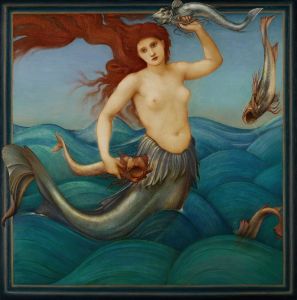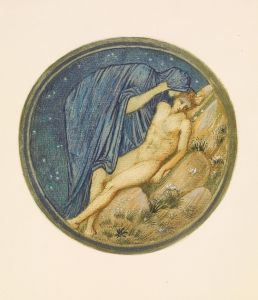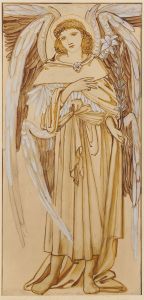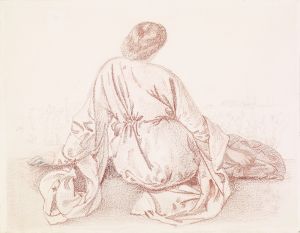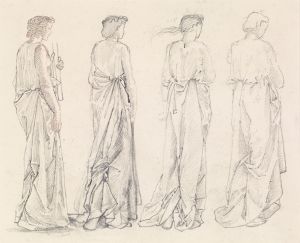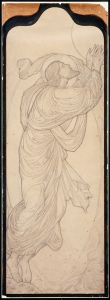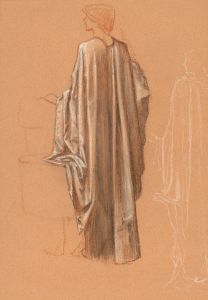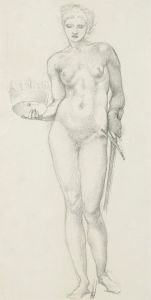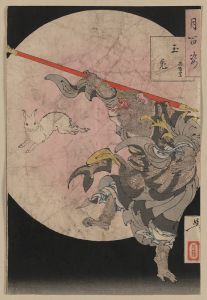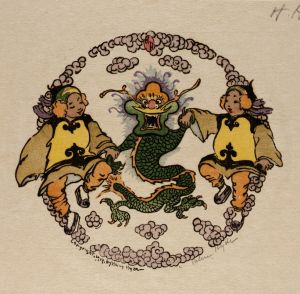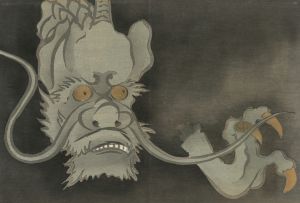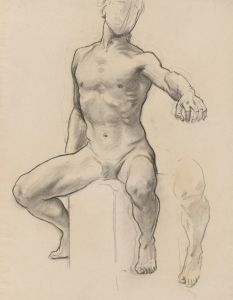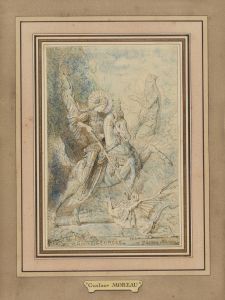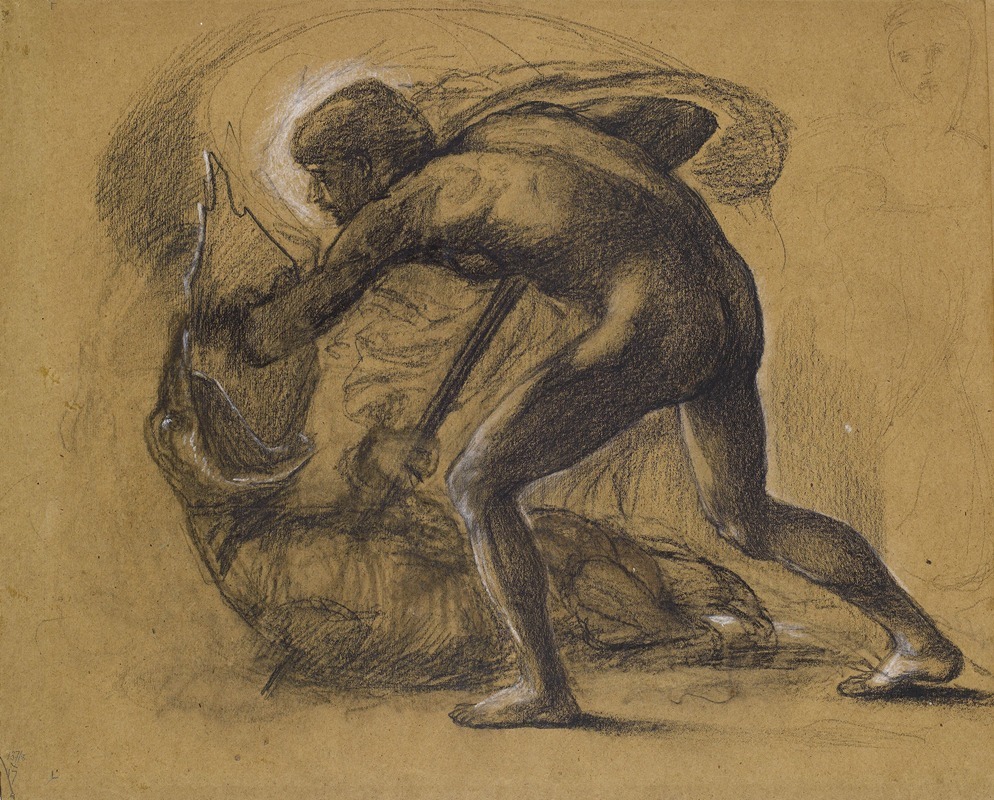
St George Series – Male Nude – Study for ‘St George slaying the Dragon’
A hand-painted replica of Sir Edward Coley Burne-Jones’s masterpiece St George Series – Male Nude – Study for ‘St George slaying the Dragon’, meticulously crafted by professional artists to capture the true essence of the original. Each piece is created with museum-quality canvas and rare mineral pigments, carefully painted by experienced artists with delicate brushstrokes and rich, layered colors to perfectly recreate the texture of the original artwork. Unlike machine-printed reproductions, this hand-painted version brings the painting to life, infused with the artist’s emotions and skill in every stroke. Whether for personal collection or home decoration, it instantly elevates the artistic atmosphere of any space.
"St George Series – Male Nude – Study for ‘St George slaying the Dragon’" is a preparatory drawing by the British artist Sir Edward Coley Burne-Jones. Burne-Jones, born on August 28, 1833, and died on June 17, 1898, was a prominent figure in the Pre-Raphaelite Brotherhood, a group of English painters, poets, and critics founded in 1848. The Brotherhood sought to return to the detail, intense colors, and complex compositions of Quattrocento Italian art.
The "St George Series" refers to a collection of works by Burne-Jones that depict the legend of Saint George, a Christian martyr and Roman soldier who is best known for the myth in which he slays a dragon to save a princess. This legend has been a popular subject in Christian art and literature for centuries, symbolizing the triumph of good over evil.
The "Male Nude – Study for ‘St George slaying the Dragon’" is a preparatory study, meaning it was created as part of Burne-Jones's process of developing the final composition for his painting. Such studies were common practice among artists of his time, allowing them to experiment with poses, anatomy, and composition before committing to the final work.
In this particular study, Burne-Jones focuses on the male nude figure, likely representing Saint George himself. The drawing showcases Burne-Jones's meticulous attention to human anatomy and his ability to render the human form with grace and precision. The figure is depicted in a dynamic pose, which suggests movement and action, fitting for the dramatic narrative of Saint George's battle with the dragon.
Burne-Jones's work is characterized by its medieval romanticism, intricate details, and a sense of otherworldly beauty. His art often features elongated figures, elaborate costumes, and a dreamlike quality, all of which can be seen in his studies and final works. The "St George Series" is no exception, embodying the artist's fascination with mythological and legendary themes.
The study is executed in pencil, a medium that allows for fine detail and subtle shading. This choice of medium highlights Burne-Jones's skill in drawing and his ability to convey texture and form with minimal tools. The careful rendering of muscles and the naturalistic portrayal of the human body in this study reflect the artist's deep understanding of classical art and his dedication to achieving anatomical accuracy.
Burne-Jones's preparatory studies, including the "Male Nude – Study for ‘St George slaying the Dragon’," provide valuable insight into his artistic process and the development of his larger works. These studies are often appreciated not only for their technical skill but also for their ability to stand alone as works of art in their own right.
Overall, the "Male Nude – Study for ‘St George slaying the Dragon’" exemplifies Sir Edward Coley Burne-Jones's artistic talent and his contribution to the Pre-Raphaelite movement. It remains an important piece within his body of work, illustrating his methodical approach to creating some of the most iconic images of 19th-century British art.





